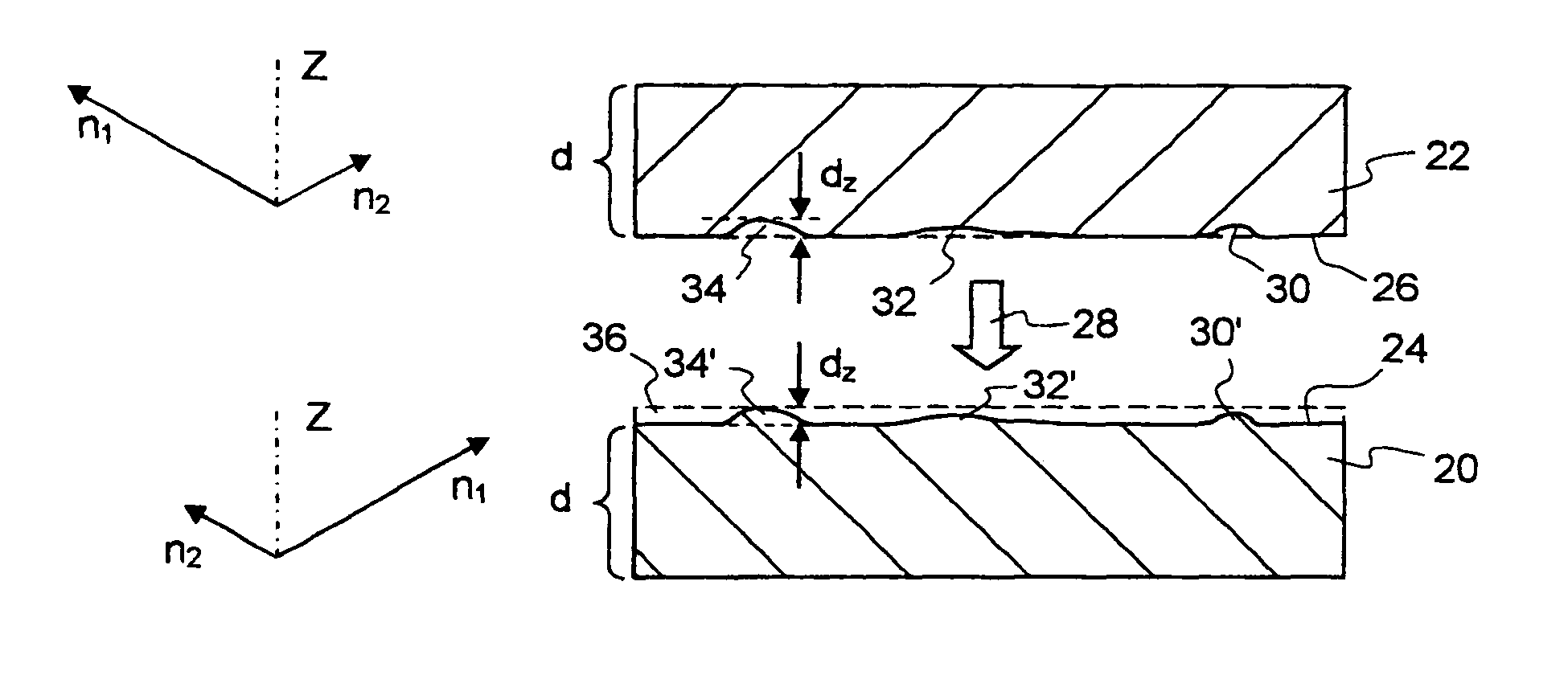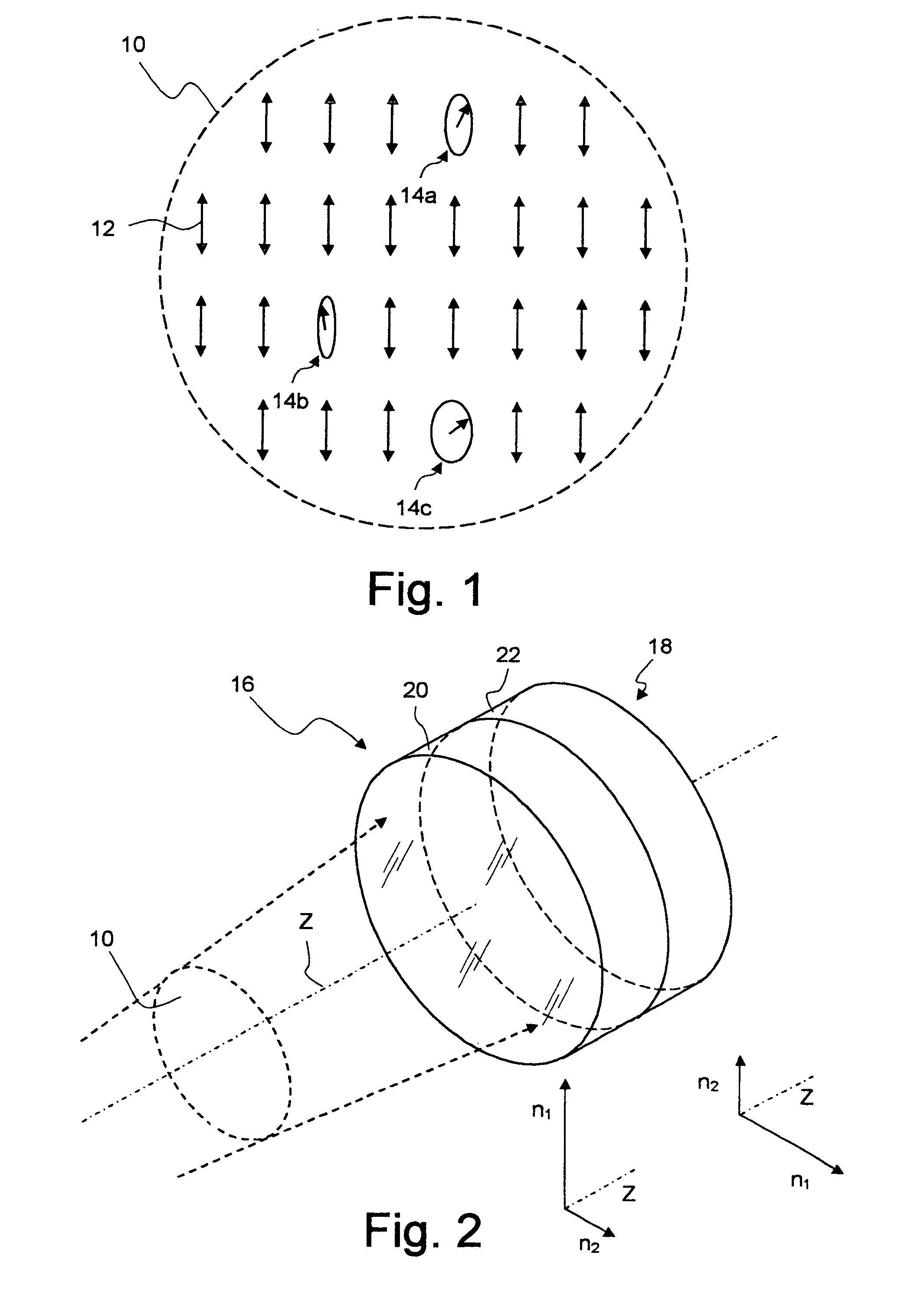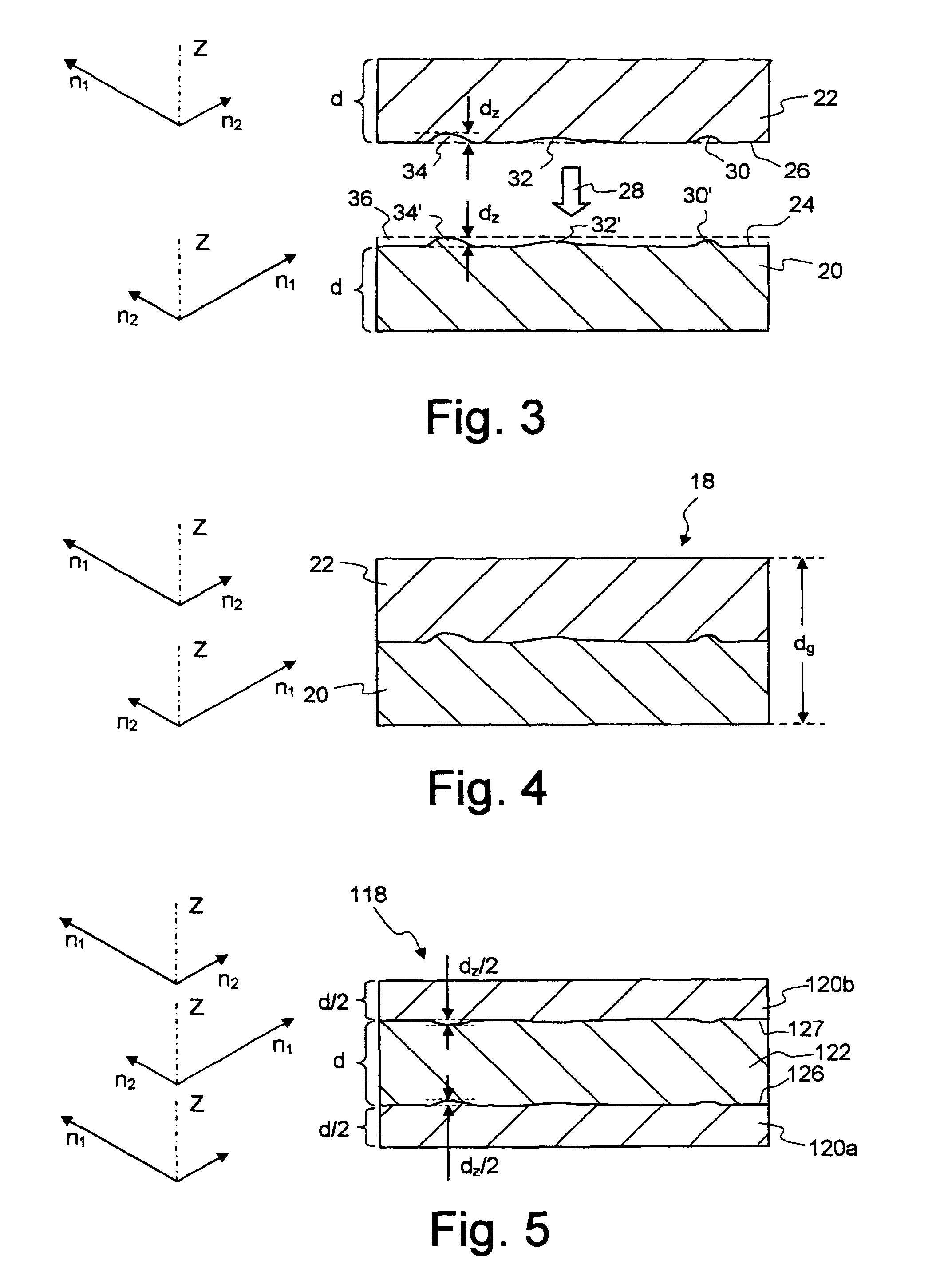Correcting device to compensate for polarization distribution perturbations
a correction device and polarization distribution technology, applied in the field of correction devices, can solve the problems of inability to compensate inability to achieve full compensation for the perturbation of the polarization distribution over the cross section of the projection light beam, and inability to achieve the effect of reducing wavefront errors
- Summary
- Abstract
- Description
- Claims
- Application Information
AI Technical Summary
Benefits of technology
Problems solved by technology
Method used
Image
Examples
Embodiment Construction
[0030]FIG. 1 shows a cross section through a light beam 10, in which a polarization distribution is schematically indicated with the aid of arrows 12. The arrows 12 are intended to represent the polarization direction inside the light beam 10. As can be seen in FIG. 1, the light is mostly polarized linearly with the same polarization direction over the cross section of the light beam 10. At a few points which are denoted by 14a, 14b and 14c in FIG. 1, however, the light is polarized not exactly linearly but more or less elliptically. These perturbations of the polarization distribution may lead, in subsequent polarization-selective optical elements such as beam-splitter layers or retardation plates, to intolerable imaging errors and / or to a contrast loss in the image plane.
[0031]In a perspective representation which is not true to scale, FIG. 2 shows a correcting device 16 with which it is possible to compensate for the perturbations 14a, 14b and 14c in the polarization distribution...
PUM
| Property | Measurement | Unit |
|---|---|---|
| wavelengths | aaaaa | aaaaa |
| wavelengths | aaaaa | aaaaa |
| thicknesses | aaaaa | aaaaa |
Abstract
Description
Claims
Application Information
 Login to View More
Login to View More - R&D
- Intellectual Property
- Life Sciences
- Materials
- Tech Scout
- Unparalleled Data Quality
- Higher Quality Content
- 60% Fewer Hallucinations
Browse by: Latest US Patents, China's latest patents, Technical Efficacy Thesaurus, Application Domain, Technology Topic, Popular Technical Reports.
© 2025 PatSnap. All rights reserved.Legal|Privacy policy|Modern Slavery Act Transparency Statement|Sitemap|About US| Contact US: help@patsnap.com



